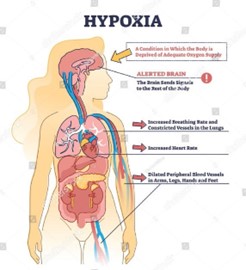The nurse provides care for the client with an asthma crisis experiencing hypoxia. Which lung sound would the nurse expect to auscultate on the physical assessment?
Vesicular sounds
Wheezing sounds
Crackles sounds
Bronchovesicular sounds
The Correct Answer is B
When someone has asthma, their lungs may produce a wheezing sound when they breathe in and out. Narrowed airways and restricted air movement through the lungs may be responsible for the wheezing sound.

Nursing Test Bank
Naxlex Comprehensive Predictor Exams
Related Questions
Correct Answer is ["B","C","E"]
Explanation
Explanation: Central venous catheters are catheters that are inserted through a vein in the chest, neck, or groin and then threaded through to a large vein near the heart. These types of catheters are used for long- term treatment and monitoring of critically ill patients.
A midline catheter is a type of peripheral IV catheter that is longer and extends into the upper arm, but it does not reach a central vein and is not considered a central line. Therefore, option a. is incorrect.
A peripheral IV catheter is inserted into a peripheral vein (e.g., hand, arm), and it does not reach a central vein, making it a peripheral line. Therefore, option d. is incorrect.
A tunneled catheter is a type of central venous catheter that is inserted through a small incision in the chest and then tunneled under the skin to a central vein. It is typically used for long-term treatment and is less likely to become infected than a non-tunneled catheter. Therefore, option b. is correct.
A non-tunneled catheter is a type of central venous catheter that is inserted directly into a central vein in the chest, neck, or groin. It is typically used for short-term treatment and is more likely to become infected than a tunneled catheter. Therefore, option c. is correct.
A PICC line (peripherally inserted central catheter) is a type of central venous catheter that is inserted through a vein in the arm and then threaded through to a central vein near the heart. It is typically used for long-term treatment and is less invasive than other types of central lines. Therefore, option e. is correct.

Correct Answer is A
Explanation
The use of an incentive spirometer is essential after surgery to prevent complications such as pneumonia and atelectasis. Atelectasis is the collapse of air sacs in the lungs, which can occur after surgery due to decreased respiratory effort and shallow breathing. An incentive spirometer helps the patient take deep breaths and increase their lung volume, preventing these complications.
Breathing rapidly to prevent pneumonia (option b) is not recommended as it can lead to hyperventilation and other respiratory complications.
Option c is incorrect because patient education is a crucial aspect of post-operative care, and the patient needs to be aware of the potential complications and how to prevent them.
The use of a chest tube (option d) is not usually required after hip surgery, and it is not a priority teaching for the patient.
Whether you are a student looking to ace your exams or a practicing nurse seeking to enhance your expertise , our nursing education contents will empower you with the confidence and competence to make a difference in the lives of patients and become a respected leader in the healthcare field.
Visit Naxlex, invest in your future and unlock endless possibilities with our unparalleled nursing education contents today
Report Wrong Answer on the Current Question
Do you disagree with the answer? If yes, what is your expected answer? Explain.
Kindly be descriptive with the issue you are facing.
